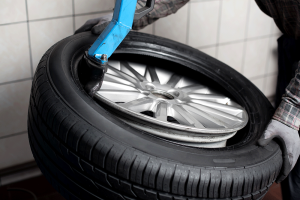
Driving on a flat tire can be an issue. You may think you can drive a few miles with a flat, but it is not recommended. When a tire loses a significant amount of air pressure, it will become either low or flat. This can occur for many different reasons, such as a defect, poor air pressure, puncture, or over use.
Showing signs
A tire that is at the end of its life cycle can also show signs it may blow if it’s not replaced. Any tire under the recommended tread depth should be replaced as soon as possible. Also be aware of any tire with the steel showing through the tread. It is important to always check your air pressure as well to ensure it’s at the correct level. Driving on under-inflated tires causes increased wear, damage and heat that can lead to a tire prematurely failing.
Pull Over Immediately
If your tire goes flat, you may feel the need to drive slowly on the shoulder on of the road. Instead of waiting on a tow truck or taking the time to install the spare tire, this may be your first thought. When driving and you experience a flat, there are some tips you can follow. Make sure to slowly pull off to the side of the road. Do so when it is safe to do so. By driving on the flat tire, you can cause damage. This includes internal structural to the tires. It can lead to the wheel and vehicle becoming damaged. It could also result in handling and control issues. Driving even a short distance on a flat can do damage beyond repair.
Driving on a flat tire
If a tire degrades enough when being driven while flat, it can start to break apart and cause damage to several important components on a car. Rotors, brake lines, suspension components, and the wheels can all get damaged. If you do notice an issue with your tire, make sure to contact us. We can inspect the tire and the options to repair it. By doing so, we can help improve the safety when you drive.




Recent Comments